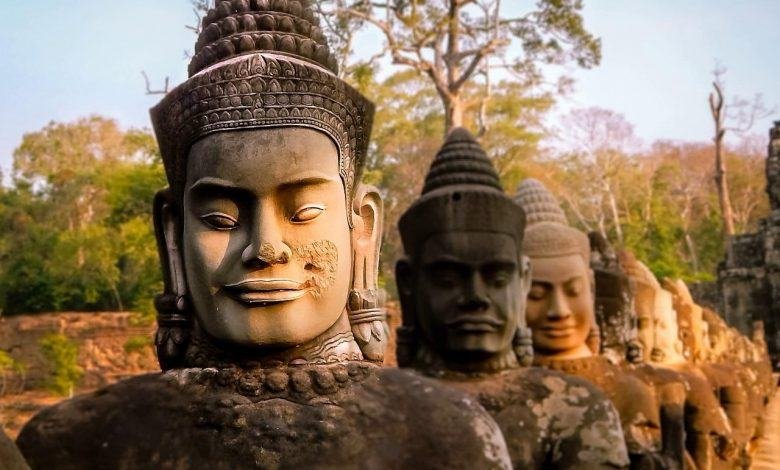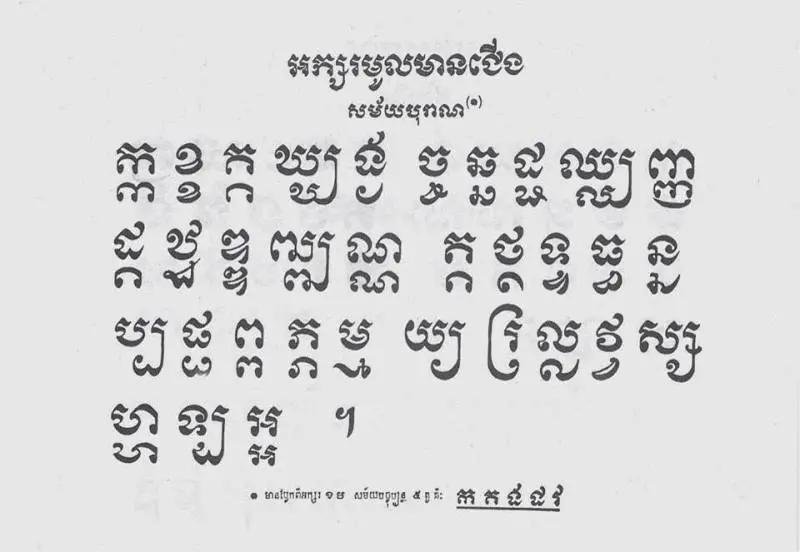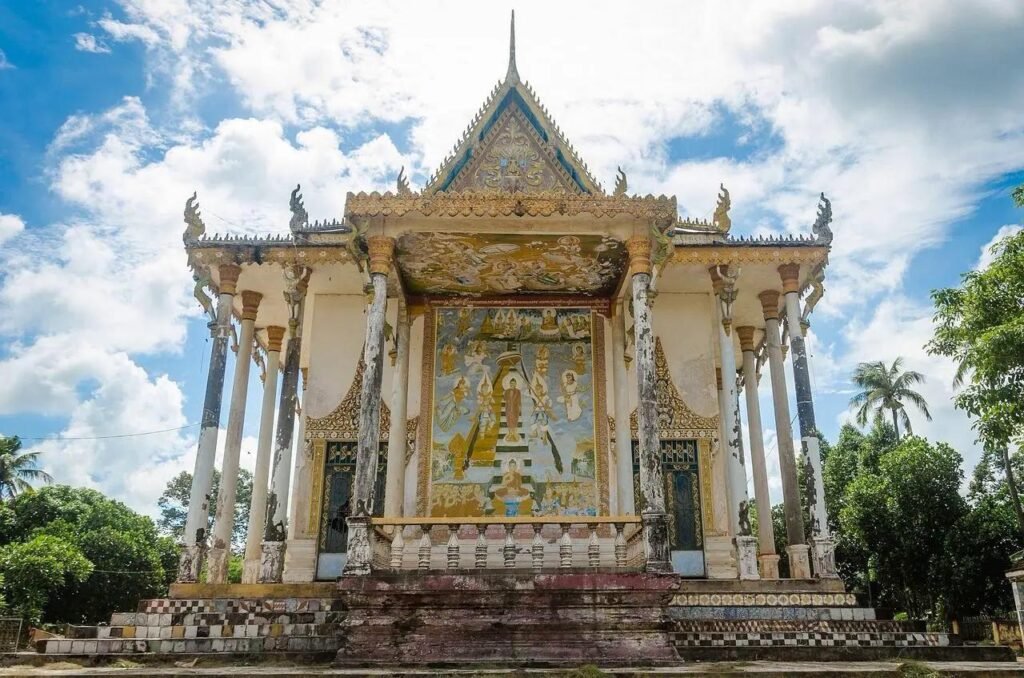Khmer People

Khmer people, also called Cambodian, or Kampuchea, are a Southeast Asian ethnic group native to Cambodia. They are accounting for over 97% of the country’s 16 million people. Smaller numbers of Khmer also live in southeastern Thailand (Northern Khmer) and the Mekong Delta region of Vietnam (Khmer Krom). There are over one million Khmer in living abroad mainly in France, the United States, and Australia.
Khmer Language
The Khmer language belongs to the Mon-Khmer family. It is also the earliest recorded and earliest written language of the Mon–Khmer family. The Old Khmer being the language of the historical empires of Chenla, Angkor and, presumably, their earlier predecessor state, Funan.

The Khmer language of the Khmer people is official language of Cambodia. Khmer language has been influenced considerably by Sanskrit and Pali, especially in the royal and religious registers, through Hinduism and Buddhism.
The Khmer Empire, which flourished between the ninth and thirteenth centuries, encompassed present-day Laos, Thailand, Cambodia, and southern Vietnam. Its power declined after being conquered by the Thai and the Vietnamese.
Khmer Lives
The Khmer are a predominantly agricultural people, subsisting on rice and fish and living in villages of several hundred persons. Other economic pursuits include weaving, pottery making, and metalworking. Khmer houses have gabled roofs and are constructed of wood or concrete. Households are based on the nuclear family and occasionally include other close relatives.
Khmer Beliefs
The majority of the Khmer follow Theravāda Buddhism, with Islam, Christianity, and tribal animism making up the bulk of the small remainder. Buddhism is the official religion of Cambodia.

The wat (Buddhist monastery) and Sangha (monkhood), together with essential Buddhist doctrines such as reincarnation and the accumulation of merit, are at the centre of religious life, but interact with indigenous beliefs such as the central role of ancestors and spirits.
The Khmer Loeu are the non-Khmer highland tribes in Cambodia. The Khmer Loeu locates namely in the northeastern provinces of Rattanakiri, Stung Treng, Mondulkiri and Crate. Most Khmer Loeu live in scattered temporary villages that have only a few hundred inhabitants. These villages usually govern by a council of local elders or by a village headman.
Khmer Loeu
Khmer Loeu, are the non-Khmer people, is the collective name given to the various indigenous ethnic groups leaving in the highlands of Cambodia. Most Khmer Loeu live in scattered temporary villages that have only a few hundred inhabitants.
The Khmer Loeu cultivate a wide variety of plants, but the man crop is dry or upland rice growth by the slash-and-burn method. Hunting, fishing, and gathering supplement the cultivated vegetable foods in the Khmer Loeu diet.
Kampuchea Krom
Kampuchea Krom or Khmer Krom means Cambodia Below or Southern Cambodia are ethnically Khmer people living in Kampuchea Krom, the south western part of Vietnam. The Khmer Krom describe themselves as the “Cambodians of the South”. Kampuchea Krom was the southernmost territory of the Khmer Empire.
Kampuchea Krom composes of 68,965 square kilometers and more than 13 million Khmer, more than 567 Buddhist pagodas and more than 20,000 Theravada Buddhist monks.
The Cham
The Chams or Cham people are an ethnic group of people in Cambodia. They originated from the Kingdom of Champa. After Vietnam invaded and conquered Champa, Cambodia granted refuge to Cham Muslims escaping from Vietnamese conquest. Islam is the religion of a majority of the Cham people.
The traditional Chams scatter throughout Cambodia. The Cham typically live in villages inhabited only by other Chams; the villages may be along the shores of watercourses, or they may be inland. Some villages specialize in fishing, weaving, metalworking; others raise fruit trees or vegetables. The Chams also often serve as butchers of cattle for their Khmer Buddhist neighbors.
The Vietnamese
The Vietnamese community scatter throughout central of Cambodia. Although Vietnamese lived in urban centers such as Phnom Penh, a substantial number lived along the lower Mekong and Bassac rivers as well as on the shores of the Tonle Sap, where they engaged in fishing. No close cultural or religious ties exist between Cambodia and Vietnam. The Vietnamese differ from the Khmer in mode of dress, in kinship organization, and in many other ways- for example the Vietnamese are Mahayama Buddhists while most of the Cambodians are Theravada Buddhists.
The Chinese
The Chinese known as Chinese Cambodians formed the country largest ethnic minority. It is estimated that 90 percent of the Chinese in Cambodia were in commerce and other businesses. Chinese Cambodians have a strong presence in Cambodia’s political scene with many high ranking government officials being of partial Chinese descent.
Many Chinese Cambodian families have their children learn Chinese as Mandarin has been increasingly the primary language of business. One main factor is due to the rise of China’s global economic prominence and many Chinese Cambodian see Mandarin as a beneficial asset to conduct business and Mainland China.
Chinese Cambodians are generally practitioners of Chinese folk religion, which incorporates rituals associated with Taoism, Confucianism and Buddhism. Chinese Cambodian families generally do not practice Theravada Buddhism and send their children to Khmer monasteries, except for those descendants who have integrated into mainstream Khmer society.
No Comments